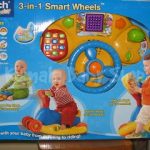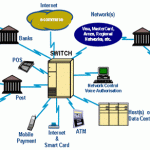
Nielsen’s 10 heuristics or timeless UX rules
Are there any timeless rules in the UX world, which should be followed each time to achieve a satisfactory result? Yes and no. The answer is not clear. However, it is worth mentioning that there is a specific decalogue, which for many UX designers is something of a checklist to evaluate the degree of usability of an application or a website. This decalogue is Nielsen – Molich’s 10 Usability Heuristics.
To answer the question of what usability heuristics are, we need to go back to 1990, when Jakob Nielsen and Ralf Molich presented a set of 10 principles for human-machine interaction. Nielsen is not as famous as IT celebrities such as Gates, Jobs or Ellison, but the impact his heuristics have had on the approach to developing applications and websites is invaluable. Sam Nielsen is a man full of controversy, because on the one hand having a rich experience (he worked m.in. The first is a computer scientist with a degree from IBM and a PhD in computer science from the Technical University of Denmark, the other is a hardcore IT conservative and author of many questionable statements. In short, 32 years ago, general rules were created to evaluate the usability of developed products.
10 Nielsen heuristics
1. Visibility of system status
The system should always inform users what is happening at any given moment. At every moment of performing any operation, the user should have precise information about its status. Good examples are progress bars, distinctions in the form of button color changes or highlighting. Another good example is the visual presentation of the availability of goods in an online store or the availability of seats in a ticket reservation system.
2. Match between system and the real world
The system should speak the language of the user – words, terms and phrases he or she is familiar with. Avoid incomprehensible symbols, complicated phrases and jargon understandable only to people who are very deep into technical aspects of a given technology. Also, all icons and arrangement of the interface should refer to generally accepted standards – examples are the play and stop button in music players or the trashcan icon for deleting objects.
3. Give the user control and freedom
Users often perform certain actions by mistake. Then they need something like an “emergency exit” to go back to the previous stage of the operation, make a correction, or just close some annoying pop-up. Sometimes a properly placed “X” icon or visible “cancel” button is sufficient. Another solution to the problem of “limited freedom” is the ability to go back in the form a few steps to correct one of the completed information without having to start the whole process from the beginning.
4. Keep Consistency and standards
Consistency above all! Users should not have to wonder if different words and actions mean the same thing and lead to the same goal. Experience tells us that a shopping cart icon will indicate the products we want to buy, a magnifying glass will allow us to search for the information we need, and blue underlined text we can click.
Nielsen divided consistency into two types: internal and external. Internal consistency refers to consistency within a product or an entire product family. It’s about sticking to a uniform design – using consistent fonts, colors, page layouts, etc. A good example of internal consistency is the Office ribbon – several products with the MS logo, yet the font can be changed in each of them in almost the same way.
External consistency refers to the overall industry standards. Users using competing products will want to transfer their habits to our product as well. Examples of? Menus placed in the same place on the page, large and clear search bar, logo placed in the upper left corner.
5. Error prevention
Error messages are important, but a design that prevents errors from occurring is preferable. Various tools and techniques can be used, but the main rule is: eliminate costly mistakes first, then take care of the little things. A good example of error prevention is the need to confirm each operation – this eliminates the impact of accidental clicks throughout the process. Another solution are prompts in forms on how to enter data, e.g. height in centimetres or phone number without spaces.
6. Recognition rather than recall
Relieve user memory by displaying objects, actions and options. All necessary information should be visible on screen. The user should not have to remember throughout the entire process what they did at the beginning. Good examples of relieving the user’s memory are search term suggestions when text is entered and a list of recently viewed products.
7. Ensure flexibility and efficiency of use
Various shortcuts and options added to the interface, which speed up operations for both beginners and experienced users. Examples are checkboxes “select all”, quick links, remembering filters or the ability to add products to a favorites list. Personalization and the ability to adjust the application to the user’s preferences is basically a standard, because nothing is as annoying as having to perform repetitive actions like setting filters manually or searching for products that we have already ordered a thousand times.
8. Aesthetic and minimalist design
Many believe that this heuristic perfectly reflects the spirit of Nielsen. In the name of the “less is more” principle, each element should not contain unnecessary or distracting information. Any “extra” information reduces the visibility of the “basic” information – Therefore, messages should be concise and each piece of information should serve a specific purpose. Minimalism is to ensure readability and clarity – usability is a priority, aesthetics should not limit it. Perhaps the best examples are simple and clear forms, with a well-chosen, subdued color palette, complemented only by minimalist symbols and icons.
9. Help users recognize, diagnose, and recover from errors
In short, it’s all about error handling. Error messages should be expressed in plain language (preferably tailored to the user), precisely identifying the problem and indicating a solution. A perfunctory “an error occurred,” “the process failed,” or “error B0110” is far too little and not what the user expects. It is worth taking care of the right setting of an error message – a red frame, red font or an exclamation mark icon in the message strongly suggest that something has gone wrong. Model examples are messages about an already taken user name along with a suggested name. Another example would be a search engine correcting a spelling error in a query a user entered.
10. Take care of Help and documentation
Even if the interface does not require extensive instructions, the user should still have access to documentation and help. Necessary information should be easy to search for and list the steps to follow in a specific case. In theory, a useful product should be intuitive enough that the user doesn’t have to study tutorials; unfortunately, this is not achievable every time. A “help” section, FAQ, or possibly the most common problems are examples of ways to implement these heuristics.
Summary
Nielsen’s 10 heuristics are not a compendium of knowledge on product usability, but they are a good introduction and starting point for usability testing. Everyone dealing with User Experience should treat heuristics as a checklist, which is an absolute minimum. The model developed by Nielsen allows you to identify the vast majority of problems in a relatively simple way and provides a good basis for building your own best practices.




